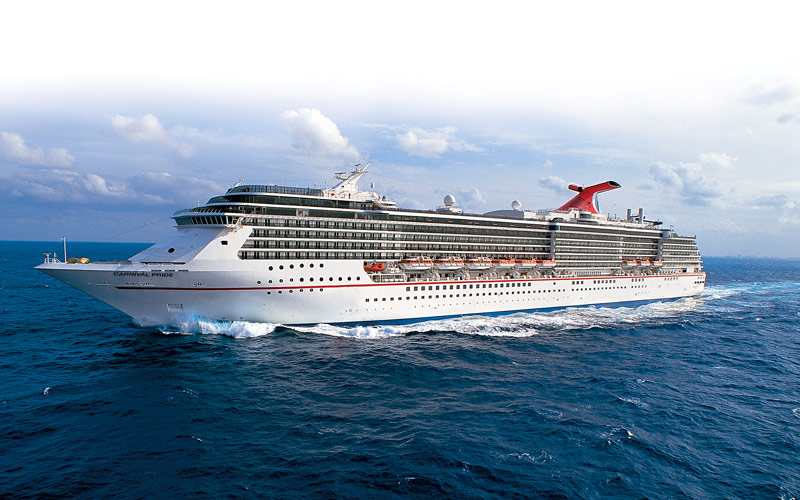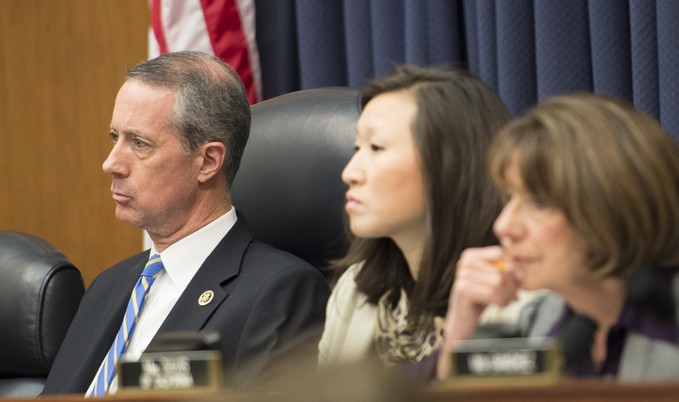 Carnival Pride | Courtesy of The Cruise Web Carnival Pride | Courtesy of The Cruise Web by Madeline Merrill This past winter break, my family and I left port from Baltimore, Maryland the day immediately following Christmas. We wound our way through the Atlantic Ocean aboard the Carnival Pride to Grand Turk, Half Moon Cay, and Freeport, Bahamas for some much-needed time away from school and work. While aboard the Carnival cruise line, we encountered many a crew member who hailed from the Philippines, Russia, Peru, or Indonesia – countries with average GDPs significantly lower than that of America’s. I can recall meeting only two American employees among the Carnival Pride crewmembers. The cruise line industry employs approximately 200,000 individuals worldwide.[1] Typically, there is one crew member for every three to four passengers on board each commercial ship. The hours can be long, and a worker’s ability to ‘get away’ from work is extremely limited, if not impossible, while aboard the cruise line. But cruise lines can justify their low pay to their workers in our global economy, as the income of staff members is often notably higher than salaries available in employees’ home countries. The International Transport Workers’ Federation “represents seafarers on bodies such as the International Maritime Organisation (IMO) and the International Labour Organisation (ILO), which set these global standards for employment conditions, recruitment, training and safety at sea.” [2] These are international authorities that dictate regulations for the working conditions for employees, as well as safety regulations. But although cruise lines do abide by some international maritime standards, the employee pay and working conditions fall well below American labor standards, and the International Maritime Organization does not have the authority to enforce its own rules. Major companies like Carnival and Royal Caribbean are incorporated into foreign countries’ GDPs, like Panama, the Bahamas, Bermuda, and Liberia. By proudly flying the flag of these nations on their ships – and not that of the United States – these corporations are able to avoid United States’ federal taxes, labor laws, and safety regulations. [3] Cruise Lines International Association represents 26 cruise lines, and publicly shared that, in 2011, three-quarters of the nearly 16 million cruise bookings worldwide were made from the United States. [4] Although it is Americans who are enjoying the vast majority of Caribbean getaways at lower prices, a maid aboard a Royal Caribbean ship, for example, may work 12 hours a day, seven days a week, for as little as $156.25 a week with no tips. U.S. labor laws are not applicable to provide protection to crew members at sea, nor is there any real oversight of the cruise lines' operations [5]. Safety precautions are a pressing concern for guests and crew members alike. Ross Klein, a cruise expert and author, shares that “fires broke out in 79 cruise ships from 1990 to 2011. Most of these fires received little coverage in the U.S. press. It is a topic that the travel publications avoid and travel agents do not like to hear,” contrasting against their colorful advertisements of cruising as a fun, safe family vacation.[6] The cruise industry provides once-in-a-lifetime memories for American families at relatively discounted prices, but at what social cost to employees? At what safety risk? Americans - my family included - might want to think twice before booking an all-inclusive cruise down south. Safety concerns, low pay, and tax evasion are just a few reasons why Carnival and Royal Caribbean stay ‘afloat’ financially. But we as consumers need to be diligent in our demands for fair wages for workers and the safest ships possible. [1] http://www.itfseafarers.org/ITI-cruise.cfm [2] http://www.itfseafarers.org/ITI-cruise.cfm [3] http://www.cnn.com/2013/02/13/opinion/walker-cruise-ships/ [4] http://www.cnn.com/2013/02/13/opinion/walker-cruise-ships/ [5] http://www.cnn.com/2013/02/13/opinion/walker-cruise-ships/ [6] http://www.cnn.com/2013/02/13/opinion/walker-cruise-ships/
1 Comment
 House Armed Services Committee Chair Mac Thornberry. Photo by Chairman of the Joint Chiefs of Staff via Flickr House Armed Services Committee Chair Mac Thornberry. Photo by Chairman of the Joint Chiefs of Staff via Flickr Each year, Congress passes the National Defense Authorization Act (NDAA), which authorizes the various programs and spending of the Department of Defense. This bill has not been passed yet for 2017. Rumor has it, two main issues are holding up the bill: wording that could allow discrimination based on sexual orientation and gender identity, and a desire by Majority Leader Kevin McCarthy for language to bar an bird called the sage grouse from the federal endangered species list until at least 2025.[i] It is no secret that Congress has difficulty passing bills, but the fact that a bird could hold up one of the biggest bills Congress must pass seems pretty ridiculous. Civil-military relations in the US have always been complicated. Numerous parties, including Congress, the Executive Branch, and the US Military, have a voice in national defense policymaking. Policymaking can be messy when including each of these voices, particularly when observed through the lens of Congress. In the past several decades, partisan politics and national debt have only intensified the strained relationship between Congress and the Armed Services.[ii] This strain is particularly visible in the formation of the defense budget. The NDAA is merely the first piece of the defense budget in Congress. After months of calculations and planning by the separate military forces, the Department of Defense’s (DoD) budget requests are submitted to the President, who then submits his budget to Congress. While the NDAA must pass every year, as an authorization bill, it merely authorizes the government to spend money on particular defense programs. However, lawmakers then prioritize matching the spending authorized in the NDAA when designating spending for defense through the appropriations process. Before the November 2016 election, Congress stalled the NDAA and appropriations measures, and passed continuing resolutions to fund the government through December 9, 2016. The Republican Party swept the presidential, congressional, and state-level elections, with the largest number of Republican elected officials in recent history. Right now, Congress is waiting to hear from President-elect Donald Trump on whether or not he would prefer to create his own budget for FY2017. Even if the NDAA is passed prior to the takeover of the new administration, it is unclear what President Obama will do. The current administration has threatened a veto similar to the October 2015 NDAA veto.[iii] Based simply on Congress members’ opinions, it is unclear when the appropriations bills will be dealt with: during the lame duck or after the new administration is brought in. Members such as House Majority Leader Kevin McCarthy, Senate Armed Services chairman Sen. John McCain, and several appropriations subcommittee chairmen have favored getting the appropriations bills passed sooner rather than later, in order to clear the agenda for the new administration. However, members of the freedom caucus such as Rep. Dave Brat (R-VA) prefer to wait until President Obama is no longer at the table, replaced by the new President Trump in order to maximize party control.[iv] Whether or not the Republican Party wants to burden their newly elected President with the current year’s budget, right before he starts his own draft budget for FY2018, is yet to be determined. Optimistically, the recent elections could ease the passage of defense appropriations, and perhaps the passage of appropriations as a whole in future years. However, it would be naïve to believe Congress won’t face partisan gridlock. One key aspect of defense funding in the future that remains to be seen is the relationship between House Speaker Paul Ryan and President-elect Donald Trump. Speaker Ryan had an uncertain take on Trump’s candidacy, endorsing the President-Elect and then rescinding the endorsement. However, recent signs of Speaker Ryan’s support after Donald Trump’s victory could point to a promising relationship between the two powerful men that could prevent situations such as the October 2015 veto of the NDAA. For national defense, the stopgap funding provided by delays in appropriations and continuing resolutions could have serious implications for the modernization and future readiness, capability, and force size of our military, as well. We face threats in Russia, China, Iran, North Korea, and from a variety of non-state actors, most prominently, the so-called Islamic State. Congress will need to address these issues through other mechanisms, or through additional emergency appropriations, should they worsen. [i] Insinna, V. (n.d.). Top Lawmakers Wrapping Up 2017 Defense Authorization Bill (Defense News). Retrieved November 28, 2016. [ii] Metz, S. (2015, February 13). U.S. Civil-Military Relations' Neglected Component: Congress. Retrieved November 25, 2016. [iii] Insinna, V. (n.d.). Top Lawmakers Wrapping Up 2017 Defense Authorization Bill (Defense News). Retrieved November 28, 2016. [iv] Stalled House Appropriations Awaiting Donald Trump (Defense News). Retrieved November 27, 2016. |
Categories
All
Archives
April 2022
|
ADDRESSVirginia Policy Review
235 McCormick Rd. Charlottesville, VA 22904 |
|
|